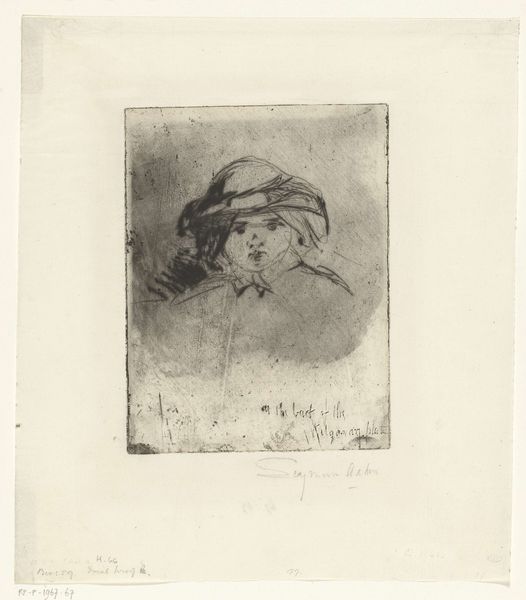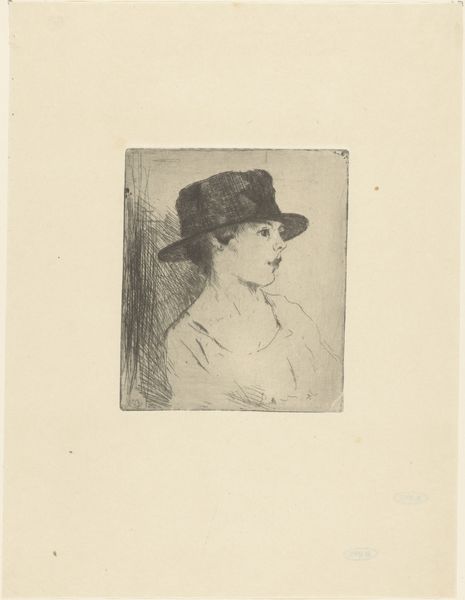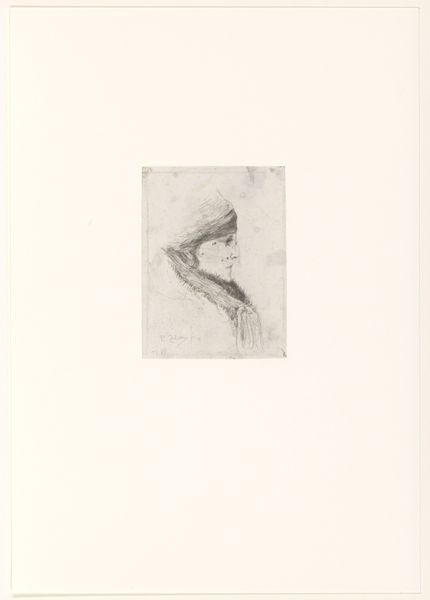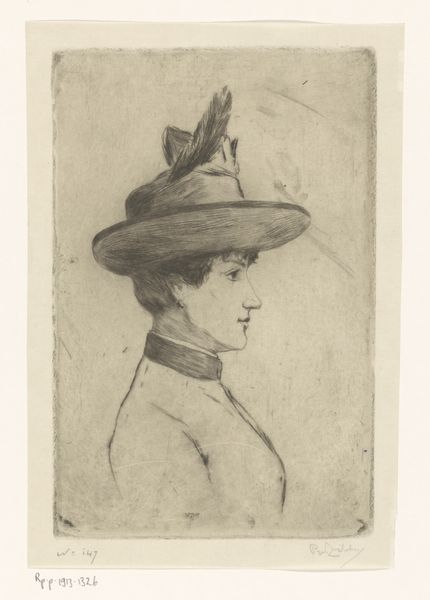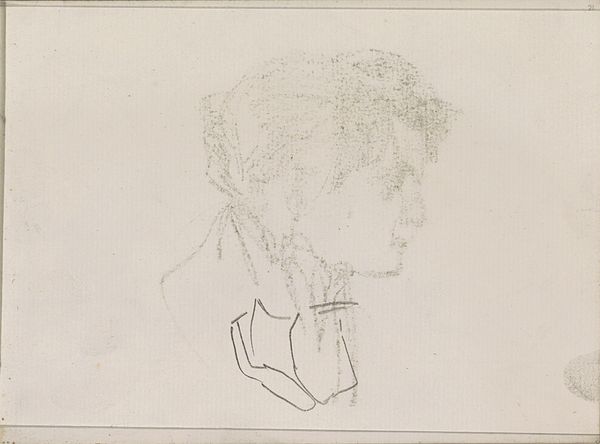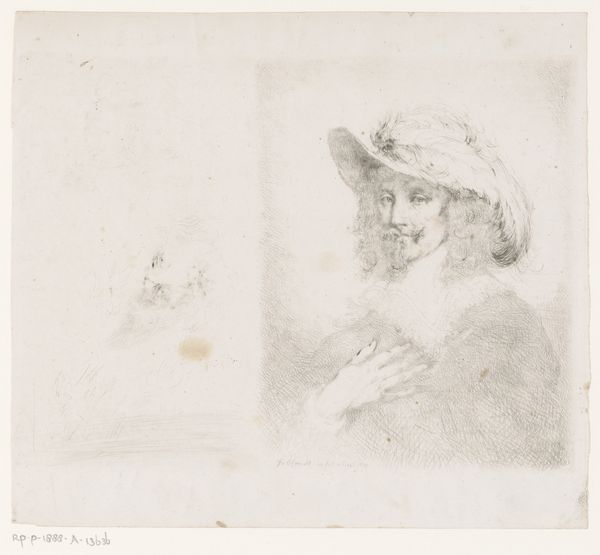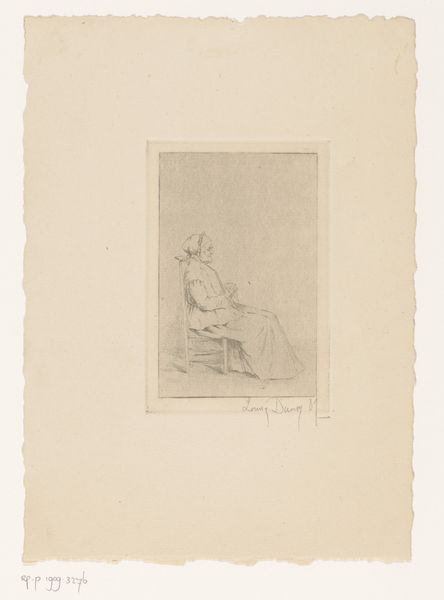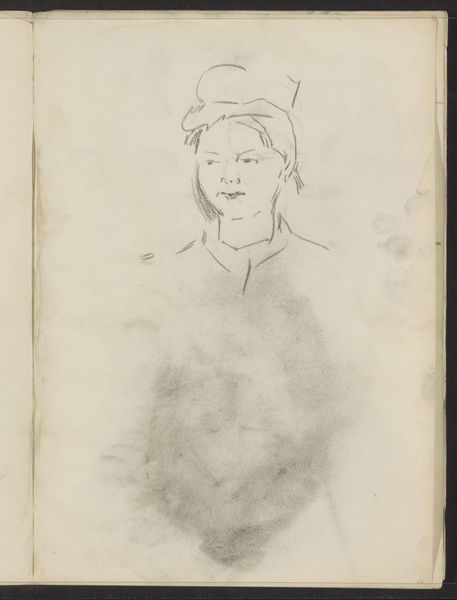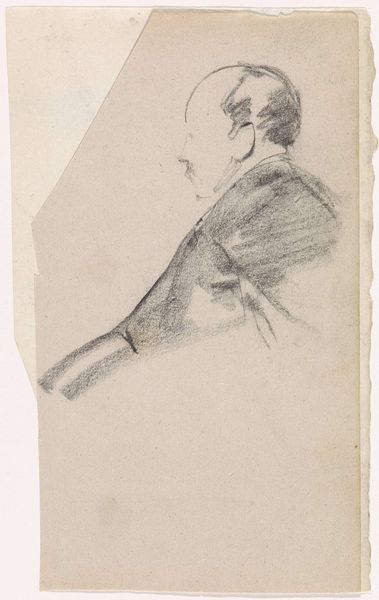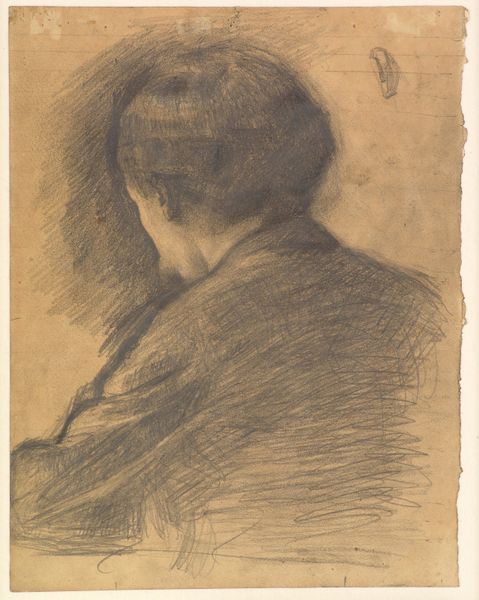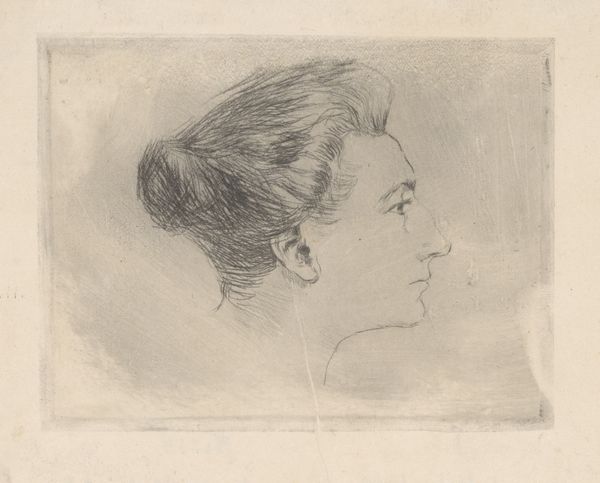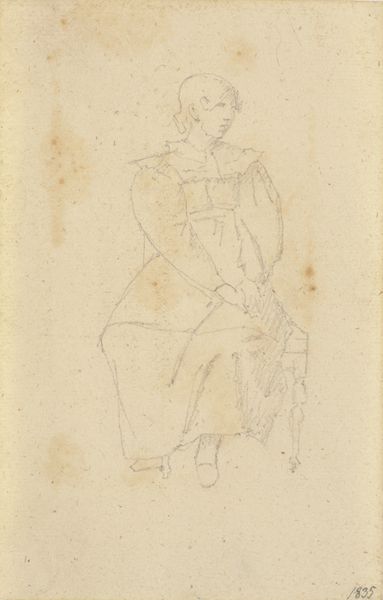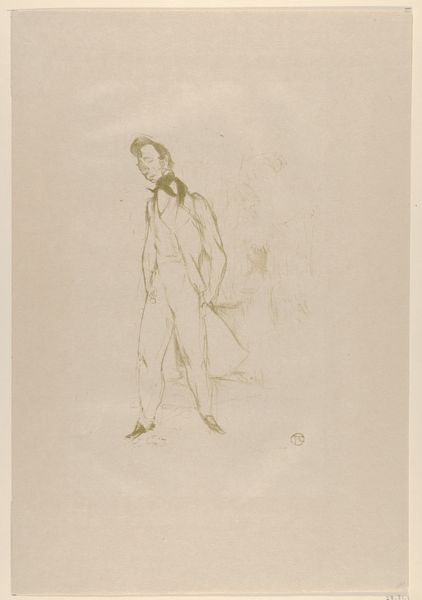
drawing, pencil
#
portrait
#
drawing
#
pencil sketch
#
pencil
#
pencil work
#
academic-art
#
realism
Dimensions: height 95 mm, width 66 mm
Copyright: Rijks Museum: Open Domain
Editor: This is "Head of a Young Man with a Hat," a pencil drawing by Léopold Flameng, created around 1859. There’s something delicate, almost ephemeral, about the sketch. I’m struck by how little detail is actually there. What do you make of it? Curator: Well, let’s think about the means of production, what the materiality of the piece suggests. It is a pencil drawing, placing it firmly in the realm of the preparatory study, something not necessarily meant for display but for workshop practice. Considering the artist's career as a printmaker, it is probable this pencil sketch might be a preparatory work for a print. It speaks of labor, of process, rather than aiming at the traditional values we find in, say, an oil portrait hanging in a salon. Editor: That's a great point, seeing it as part of a larger production process. It challenges the idea of the artist as solely a creator of "high art," but someone engaging in the day-to-day craft of artmaking. The use of pencil -- such a commonplace, accessible material -- further emphasizes that point. Do you think the social context of 19th-century academic art influences the choice of medium? Curator: Absolutely. Academic art stressed rigorous training. The accessibility of pencil meant it could be used for all levels, from initial sketches to more formal studies, crucial for developing technical skills. The social and economic implications are right there. Students of varying means could engage with drawing in the same fundamental way. We are seeing the means to an end. Editor: That's fascinating, linking the materiality of the pencil to the broader context of artistic labor and accessibility. So, the value lies not just in the image itself, but in understanding how it was made and for what purpose within that academic structure? Curator: Precisely. This sketch embodies a material connection to a specific time and place, underscoring art-making not as a magical act, but as skilled, tangible labor embedded in social realities. Editor: Thanks, that’s shifted my perspective completely. It's much more than just a portrait; it's a document of artistic production.
Comments
No comments
Be the first to comment and join the conversation on the ultimate creative platform.
